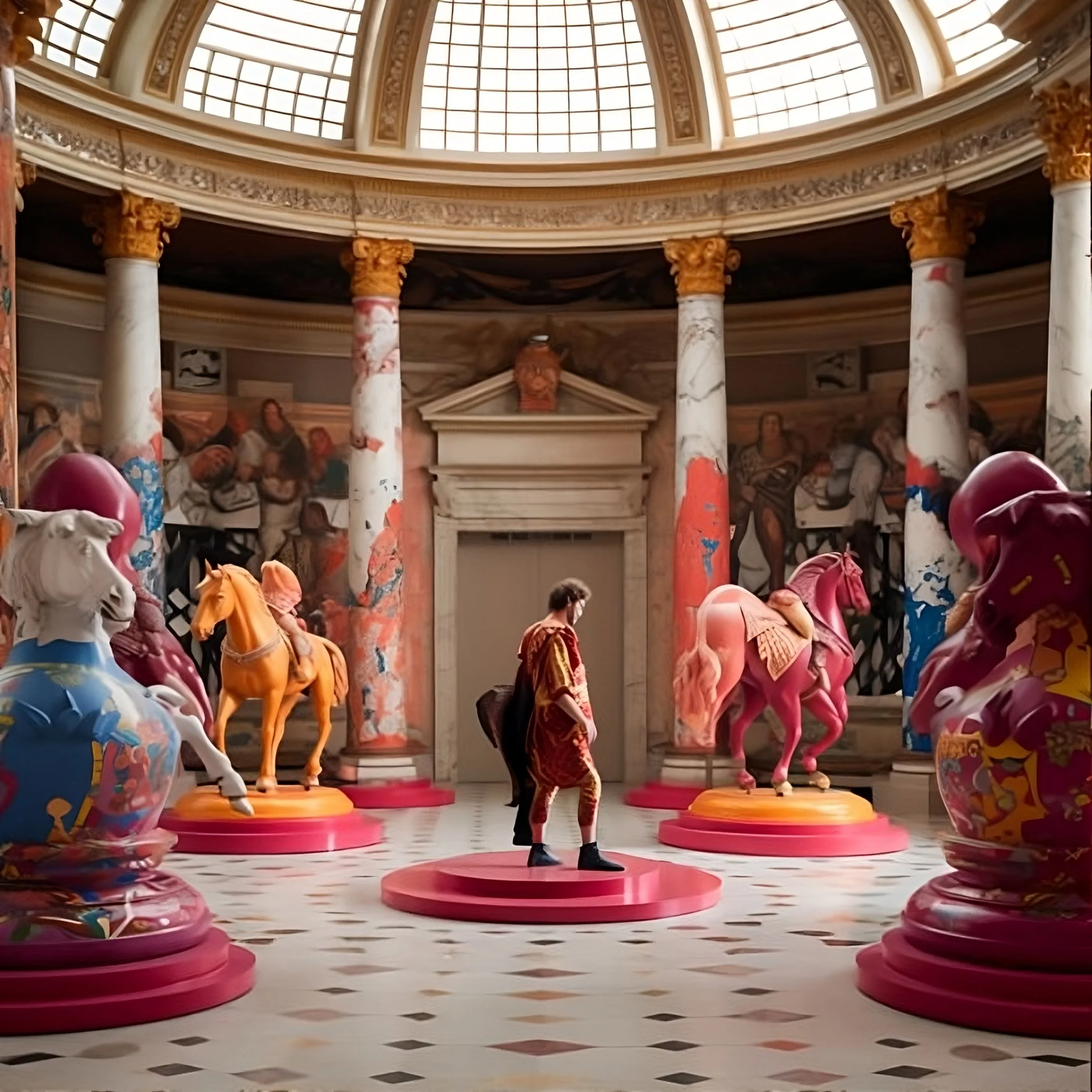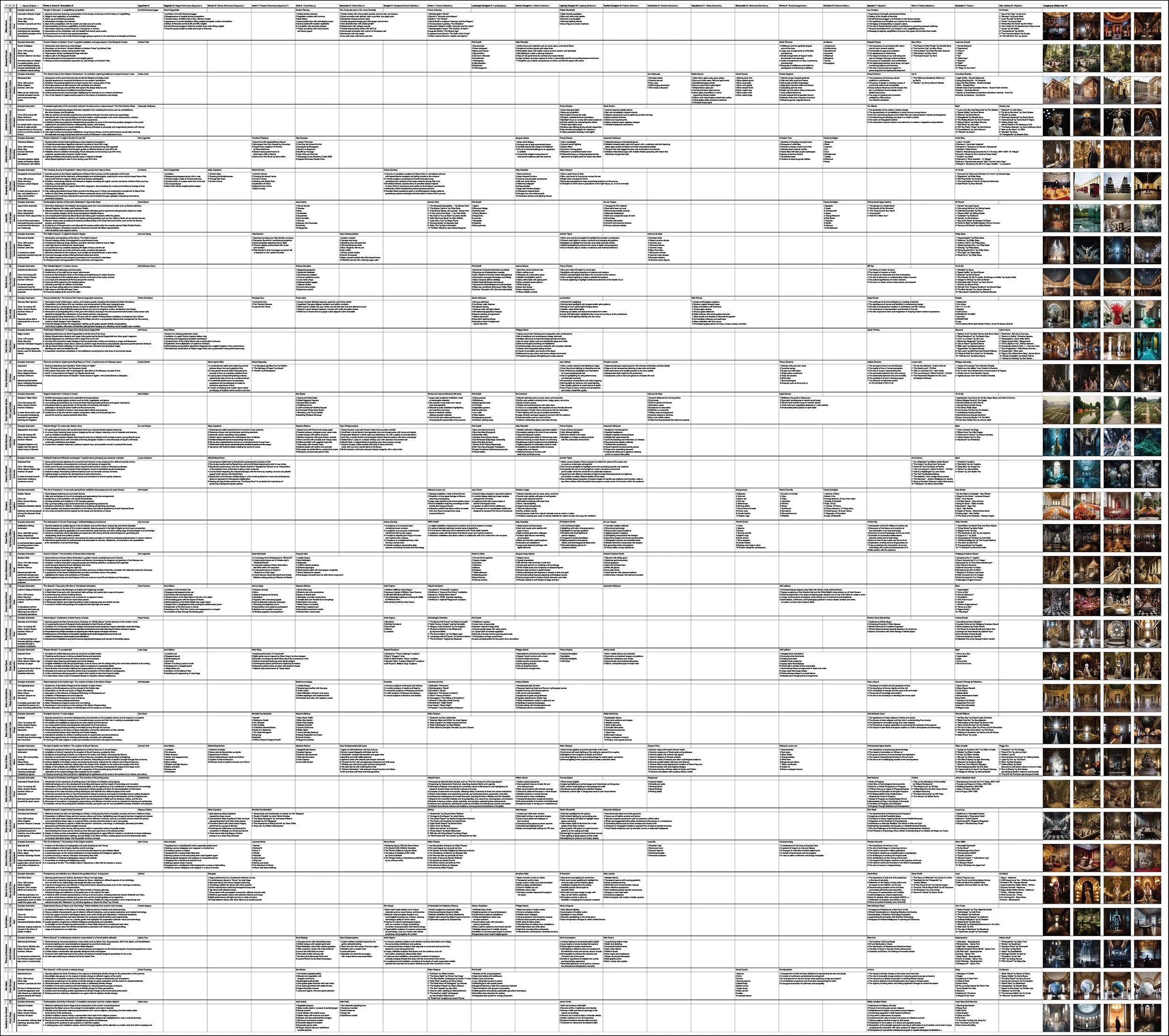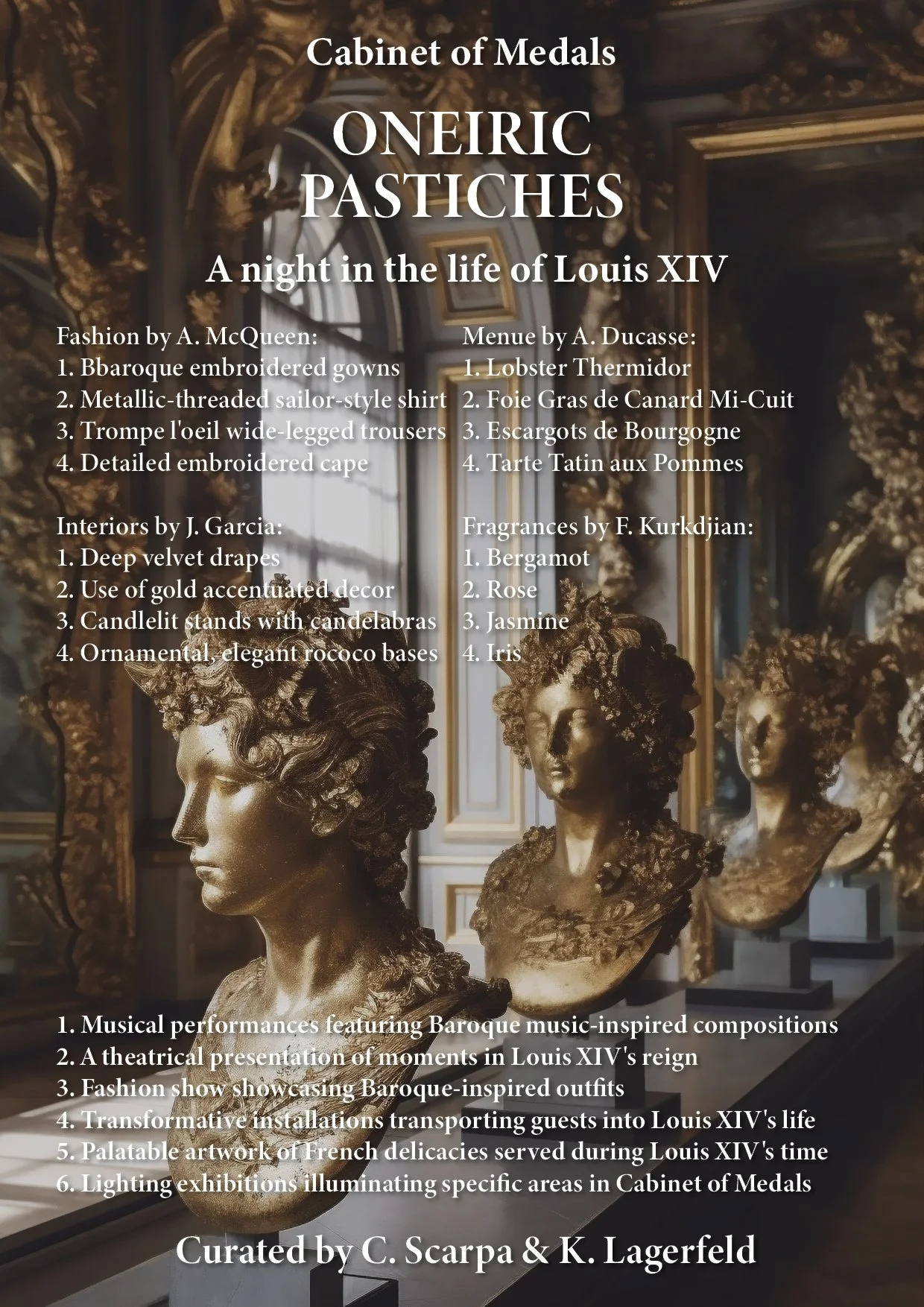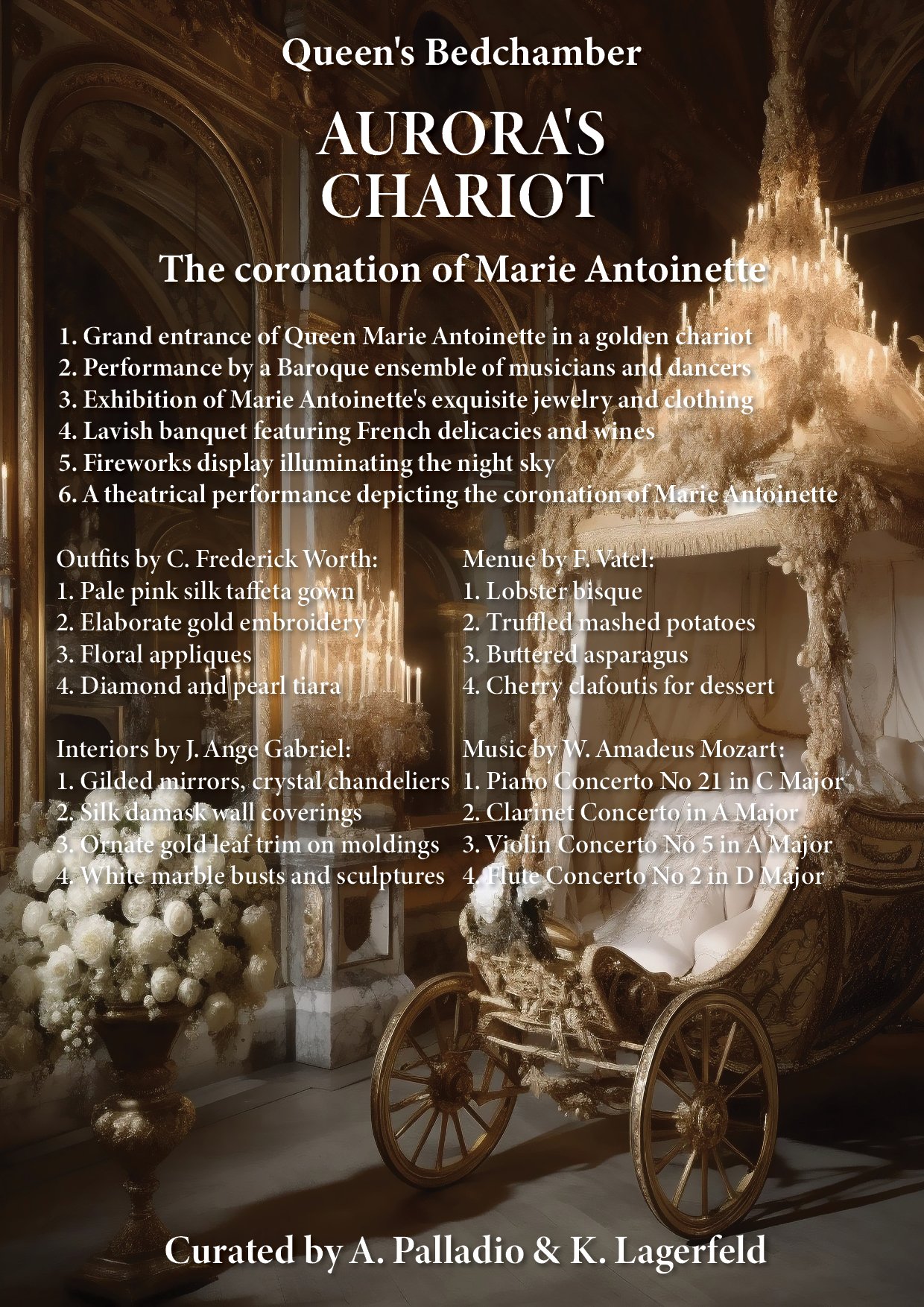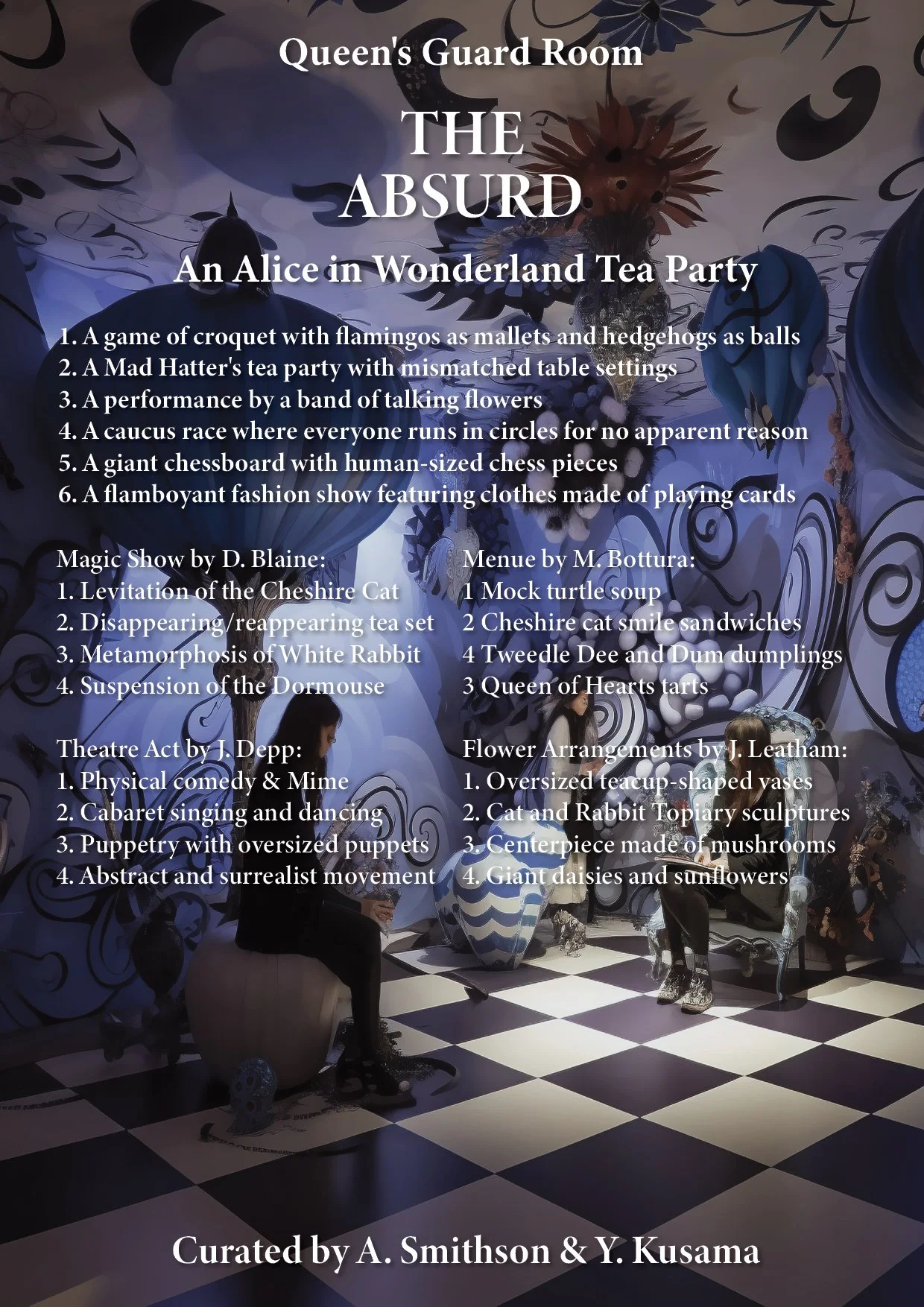STAGING VERSAILLES
INTELLIGENCES AT PLAY
by Adil Bokhari & Agostino Nickl
VERSAILLES PLAN: Classic Image / Alamy Stock Photo
There are fireworks around Lantona Fountain, as Icarus takes flight in an acrobatic performance around it. Buckminster Fuller prepared the Salon of Apollo as a solar eclipse observatory. Julia Morgan addresses cosmical motifs in the Bosquets, proposing a guided meditation session between beds of wild bergamot and trees decorated with wildflower garlands. Gian Lorenzo Bernini reenacts the eruption of Mount Vesuvius in the Salon of Diana, while smoky mezcal margaritas are served in ceramic replicas of Pompeii artifacts. And, very fittingly to the whole occasion, Paul Revere Williams invites Ray Kurzweil to host a conference on AI in the Peace Salon, alongside AI-generated art by Rafik Anadol and music by Holly Herndon. The Palace talks in many colors. Staging Versailles is an experiment in deploying Large Language Models (LLMs) as role-playing automata to re-inhabit a historic architecture and as an architectonic exercise of conceptualising, articulating, and populating the Palace of Versailles. Both programming and natural languages take part in a cascade of possible roles, crafts, and characters cast in envisioning the interiority of the project through text and images. The experiment consists of the following elements:
32 Roles: 32 notable architects as well as 20 expert domains involved in inhabiting spaces
32 Places: Individual chambers of the Palace of Versailles as speculative sites
32 Motifs reflecting historic motifs addressed by automata
1 Table serving as a receptacle for generated contributions, stored as a digital spreadsheet
Wolfram Mathematica as a coding environment
GPT 3.5.turbo accessed over the OpenAI API for text generation
Midjourney V5 for image generation
The motif of the automaton serves to address AI as a multiplicity of technics rather than as a technological singularity. In doing so, it offers a starting point to make architectural collaboration with LLMs possible; including developing a logistic framework across domains, casting characteristic automata, and staging an architectonic stage play, recorded and operated through a digital table. While we, as architects, did not design a single contribution or artefact in this process, abstracting away from common usage paradigms allowed us to play a different role; inventing a schema, identifying decisions, and making selections from the sea of characteristic outputs. Beyond the logics of an architectural practice, we implement a logistic framework that does not suggest replacing the architect but rather augmenting their capabilities by establishing conceptual communication with other characters; be they artificial, natural, or even human – here, an intelligent team is at work. A vivid conversation takes place; between the role-playing architect and the architect as role-play. The table hosts and records the theatre of an architectural project. Domains, objects, technologies, and crafts; the digital cogs and gears, coils and weights in the architectonic model. The full record of the stage-play is recorded in the table below.
Force
Cosmos
Information
Intimacy
Storytelling
Cartography
Memory
Transformation
Geometry
Ceremony
Magic
Time
Agriculture
Gravity
Continuity
Logistics
Communication
Ritual
Order
Virtue
Imagination
Life
Energy
Nature
Power
Game
Cryptography
Engendering
Myth
Synchronicity
Diplomacy
Purification
Force Cosmos Information Intimacy Storytelling Cartography Memory Transformation Geometry Ceremony Magic Time Agriculture Gravity Continuity Logistics Communication Ritual Order Virtue Imagination Life Energy Nature Power Game Cryptography Engendering Myth Synchronicity Diplomacy Purification
Copyright Adil Bokhari and Agostino Nickl, 2023.
